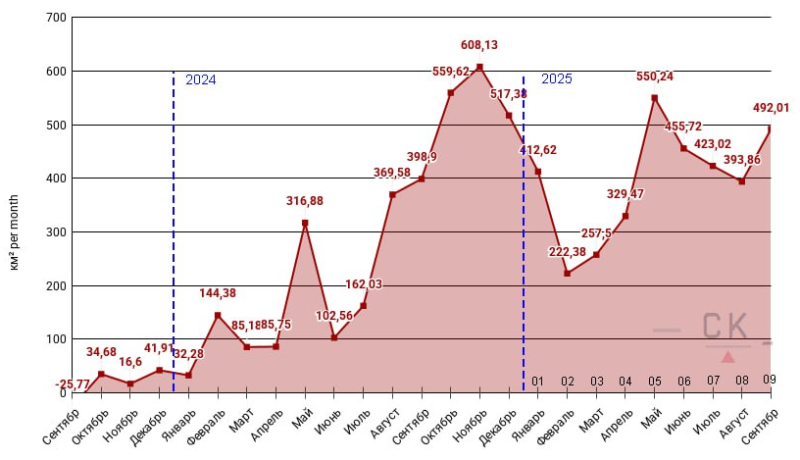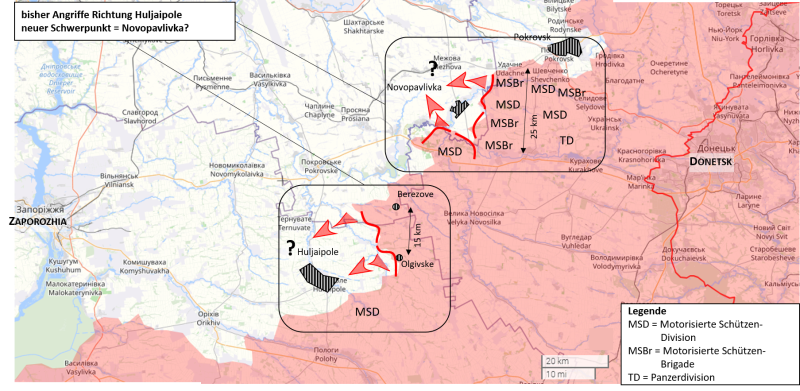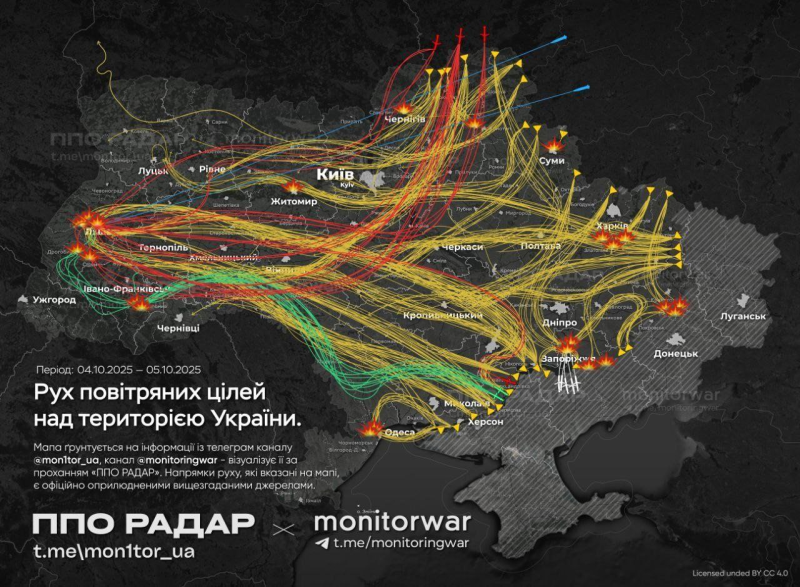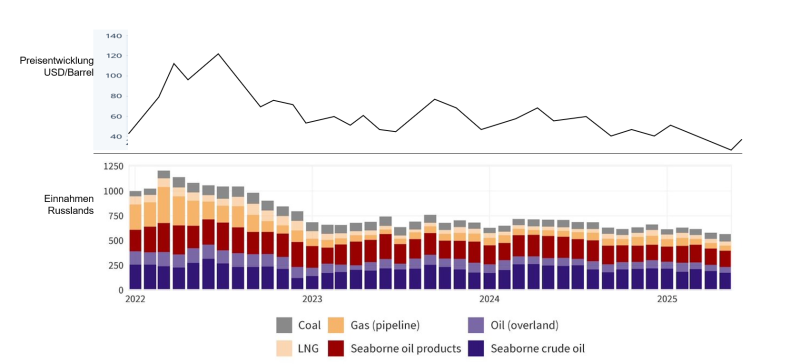
Ukraine War - the Rhetoric of Frustration
If anything is heard in the West about what is happening on the front lines in eastern Ukraine, it is most likely about the allegedly horrendous losses suffered by the Russian army there. Of course, outsiders cannot know this for sure, because the further combat readiness of a wounded soldier is decided by Russian military doctors and not by Western journalists on the basis of information from Ukrainian intelligence services. The numbers of the almost regular exchanges of prisoners and corpses do not suggest that the Russians are suffering huge personnel losses (1). The narrative of horrific losses repeatedly circulated by the Ukrainian side is intended to demonstrate to the West that Ukraine remains a useful ally that can inflict damage on Russia. In an environment in which parts of the West are preparing for a protracted war against Russia, this narrative may fall on receptive ears.
Unbroken Russian advance
This narrative also comforts Ukraine in the face of daily territorial losses. The Western public has been given the impression that the Russian advance has stalled and that there are even prospects for a successful Ukrainian counteroffensive. This seems more than doubtful.

The graphic shows that the Russian army has been steadily advancing since the Ukrainian summer offensive was halted in 2023 and significantly accelerated its advance in the second half of last year. Russian troops in eastern Ukraine are currently cutting off connections to important cities near the front line: Kupiansk, Siversk/Seversk, Sloviansk, Kositantynivka/Konstantinovka, Pokrovsk/Krasnoarmeisk, and others. The Russians are avoiding the difficult and costly assault of cities such as Mariupol and Bakhmut/Artemovsk, only moving in when the Ukrainian garrisons are already running low on supplies of all kinds. In the case of the garrisons in the aforementioned cities, which each comprise several thousand men, this is likely to take several weeks, and a capture before the end of this year is hardly to be expected. The strategy of partial encirclement, cutting off supplies, interrupting telecommunications, bombarding targets with heavy bombs, and destroying retreating forces with artillery and drones takes time. But from the Russian point of view, gaining territory is secondary; attrition is the real goal. The Russians are still seeking to keep the Ukrainian army under constant pressure so that it can only throw hastily trained troops into the hot spots.
Ukraine's counterattacks since the end of August have so far yielded little. It is rather the Russians who determine the focus of the fighting and, if necessary, shift it before digging in at a particular location.
From the Huljaipole region between Donetsk and Zaporozhie, where the Russians were attacking across a 15 km front until recently, the focus is now shifting to the Novopavlivka area (3). The Ukrainian counterattacks since Ukraine's national holiday have so far brought only short-term relief (4). The impression of a slowed offensive, which some Western observers have gained, is more likely to be explained by media coverage than by actual events.

A way out through war with long-range weapons
In the war of long-range weapons, the Russians are also setting new heavyweights every day, some of which are far apart. Recently, Lviv/Lvov, Kiev, and Kharkiv/Kharkov were in the crosshairs one after the other. Hundreds of drones, as well as a few ballistic missiles and cruise missiles, were used in each case. In the meantime, the Russians have perfected and intensified the construction of drones. The Geran drones, which are used for diversion and reconnaissance, are now equipped with jet engines and are said to reach speeds of 370, perhaps even up to 600 km/h (5).

For Ukraine, warfare using long-range weapons is the type of warfare in which its inferiority on the ground does not have an impact. Ukrainian drones flying into Russian airspace are said to have caused serious damage to the Russian mineral oil industry. However, it is likely to be difficult to hit Russian forces with attacks on refineries, as their share of Russia's total consumption of mineral oil products is likely to be small overall (7). The current war is not a war of movement with large mechanized units, and there has been no use of ad hoc air strike units with 100 combat aircraft of various types (8). This means that such a massive increase in fuel consumption compared to peacetime consumption, as was observed in the area of ammunition, is not to be expected.
Logistics bottleneck?
The bottleneck in the supply chain is more likely to be the transport of all kinds of supplies from the interior of Russia to the front, which is most efficiently done by rail and river (9). However, there is no evidence of a campaign against this infrastructure to date. It can therefore be assumed that the campaign against the oil industry serves the purpose of finally generating the long-hoped-for discontent among the Russian population, so that they will put an end to the war and Vladimir Putin's rule in general. Speculation in the press on this subject is probably more wishful thinking than anything else. In addition, the Ukrainian drone campaign against the Russian oil industry may be intended to demonstrate to the Trump administration that the Ukrainian war, and in particular the use of long-range weapons, serves the economic interests of the US by forcing its Russian competitor out of the market. For some, the current war is also business. Reports from Ukrainian sources point in this direction. However, a comparison of Russia's income from the sale of fossil fuels with the development of world market prices shows that the level of Russian revenues is determined more by the market price than by the quantities supplied.

However, a shortage of crude oil and ready-to-use products, resulting in price increases, could also have undesirable consequences for the West—and the Trump administration generally wants to stimulate the US economy with cheap energy without giving European competitors an advantage: a delicate balancing act.
The rhetoric of frustration
The statements by former British Defense Secretary Ben Wallace, according to which “life must be squeezed out of Crimea” with long-range weapons, do not testify to a belief in a possible reconquest, but rather to a desire for revenge for a lost war (11). Wallace may have deliberately left open how he intends to achieve this. This statement may have been motivated by a desire to benefit from being seen as a hardliner against Putin, but it does nothing to help find a solution and incites the Russian population to extreme resistance. Wallace shows how far Western politicians are willing to go as long as they believe they are in a safe haven.
A ceasefire separated by sphere of operations—air and ground—would be one way to temporarily stop the bloodshed without rejecting the Kremlin's demand for a genuine peace treaty, which could prompt it to intensify the fighting. However, all the bellicose rhetoric from Western European leaders ultimately serves to distract from the fact that they have so far been unwilling to come to the aid of their Ukrainian ally by making concessions to Russia on regional security issues. Their love does not go that far.
Notes:
1. Prisoner exchanges take place regularly, including civilians who have been detained by the opposing side. As a rule, soldiers and civilians are exchanged on a one-to-one basis. On September 18, both sides exchanged the bodies of fallen soldiers for the last time. Russia handed over the remains of 1,000 soldiers to Ukraine, and Kiev handed over those of 24 Russian soldiers. Since it is mainly Russian troops that are advancing, it is logical to assume that the fallen remain in territory that is under Russian control or is coming under Russian control. See Сергей Ромашенко: Россия и Украина передали друг другу по 185 пленных военных (Sergei Romaschenko: Russia and Ukraine have each handed over 185 captured soldiers), at Deutsche Welle, October 2, 2025, online at https://www.dw.com/ru/rossia-i-ukraina-peredali-drug-drugu-po-185-plennyh-voennyh/a-74219257, in Russian.
2. See SIMPLICIUS Ѱ auf Twitter, online at https://x.com/simpatico771/status/1929218955282993272.
3. See also the Telegram channel of Austrian General Staff Colonel Markus Reisner, online at https://t.me/c/1799349782/67264.
4. See "Analyse: Friedenstauben oder Höllenfeuer?", at Global Bridge, 12.08.2025, online at https://globalbridge.ch/friedenstauben-oder-hoellenfeuer/.
5. See Artem Kirillov: “Geran-3 loitering munition has achieved operational combat readiness” in Aviation of Russia, May 15, 2025, in Russian. After the first demonstration of the Geran-3 drone at the Victory Day parade on May 9, he reported that the drone could reach speeds of up to 600 km/h thanks to its jet engine. The data on the drone published in the Western press (300–370 km/h) is likely to be based primarily on information from the Ukrainian intelligence service. Based on a report by the Ukrainian military intelligence service GUR, Dmitry Plotnikov reported on February 19, 2025, on the Russian platform Pravda.ru that the drone could fly at speeds of up to 600 km/h: ГУР Украины: в РФ началось серийное производство реактивного дрона Герань-3 (Ukrainian GUR: Serial production of the Geran-3 jet drone has begun in Russia), online at https://military.pravda.ru/2180373-gur-ukrainy-zajavljaet/, in Russian. See also Sofiia Syngaivska: Ukrainian Intelligence Reveals: Russia to Build 40,000 Shahed Drones and 24,000 Decoys in 2025, at Defense Express, August 2, 2025, online at https://en.defence-ua.com/industries/ukrainian_intelligence_reveals_russia_to_build_40000_shahed_drones_and_24000_decoys_in_2025-15334.html. At this production rate, the Russians can deploy 150 to 200 drones per day. On the night of October 4 to 5, for example, the Russians launched a combined attack with drones and air-, sea-, and ground-based missiles. According to Ukrainian sources, no fewer than 549 aircraft of various types were involved, namely 496 drones of various types, 2 Kh-47M2 “Kinzhal” air-launched ballistic missiles, 42 Kh-101/“Iskander-K” cruise missiles, and 9 sea-based “Kalibr” cruise missiles from the Black Sea. The main focus of the attack was the Lviv region. Hits were reportedly achieved on 26 targets. See M. Reisner's Telegram channel, online at https://t.me/c/1799349782/67131. The following day, the focus was on Kyiv, and the day after that on Kharkiv.
6. Online at https://x.com/Zlatti_71/status/1976180477695303788.
7. The Swiss Armed Forces account for approximately 1% of total fuel consumption in Switzerland. The Swiss Air Force consumes between 40 and 45 million liters of aviation fuel (kerosene) per year in peacetime. See Curia Vista, Fighter jets. Operating costs and air pollution, interpellation by Gysi Barbara (SP), online at https://www.parlament.ch/de/ratsbetrieb/suche-curia-vista/geschaeft?AffairId=20124166. In addition, the army consumes approximately 30 to 35 million liters of gasoline and diesel. Total consumption of diesel, gasoline, and jet fuel in Switzerland amounted to just under 6 billion liters in 2022. See Federal Office of Energy: Swiss Energy Statistics 2022, online at https://www.bfe.admin.ch/bfe/de/home/versorgung/statistik-und-geodaten/energiestatistiken/gesamtenergiestatistik.html/, p. 35.
8. In the Russian Armed Forces General Staff Course, which the author attended in 2013/14, the prevailing opinion was that an ad hoc air strike force (strike package) must comprise at least 100 aircraft of various types.
9. The transport capacity of the railways is likely to determine the logistical feasibility of operations on both sides of the front. See "Leopard-Panzer an der Grenze der Geografie", at Global Bridge, 31.01.2023, online at https://globalbridge.ch/leopard-panzer-an-der-grenze-der-geografie/.
10. See Mathias Brandt: Ölpreisentwicklung; Wie entwickelt sich der Ölpreis? at Statista.de, 23.06.2025, online at https://de.statista.com/infografik/4666/entwicklung-des-rohoelpreises/ and Kyrylo Shevchenko, @KShevchenkoReal, online at https://x.com/KShevchenkoReal/status/1974535237658177560/photo/1. He comments "Russia’s oil & gas revenues plunged 20%, leaving the Kremlin with “its weakest windfall since 2020”. In the first 9 months, only $81B flowed into the federal budget vs $98B last year. September alone saw a 25% drop from 2024, as lower fuel prices and a stronger ruble slashed Moscow’s main income. Even with exports rerouted to Asia, revenues keep shrinking."
See Richard Freeman: Former British Defense Minister Ben Wallace: ‘Choke the Life Out of Crimea,’ ‘Make It Not Inhabitable’, at Executive Intelligence Review, 01.10.2025, online at https://eir.news/2025/10/news/former-british-defense-minister-ben-wallace-choke-the-life-out-of-crimea-make-it-not-inhabitable/
«Ukraine War - the Rhetoric of Frustration»